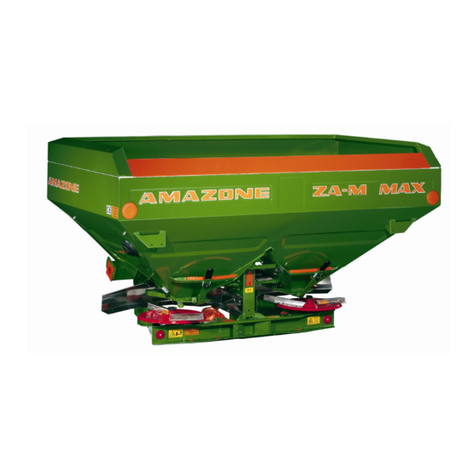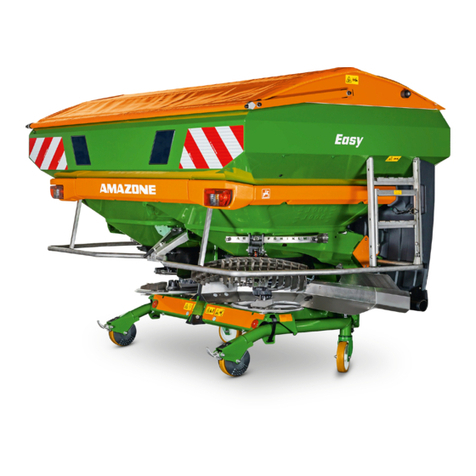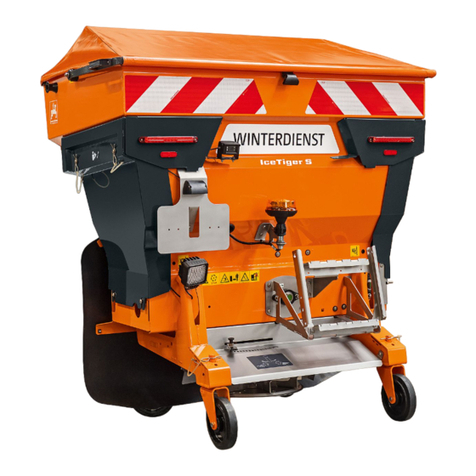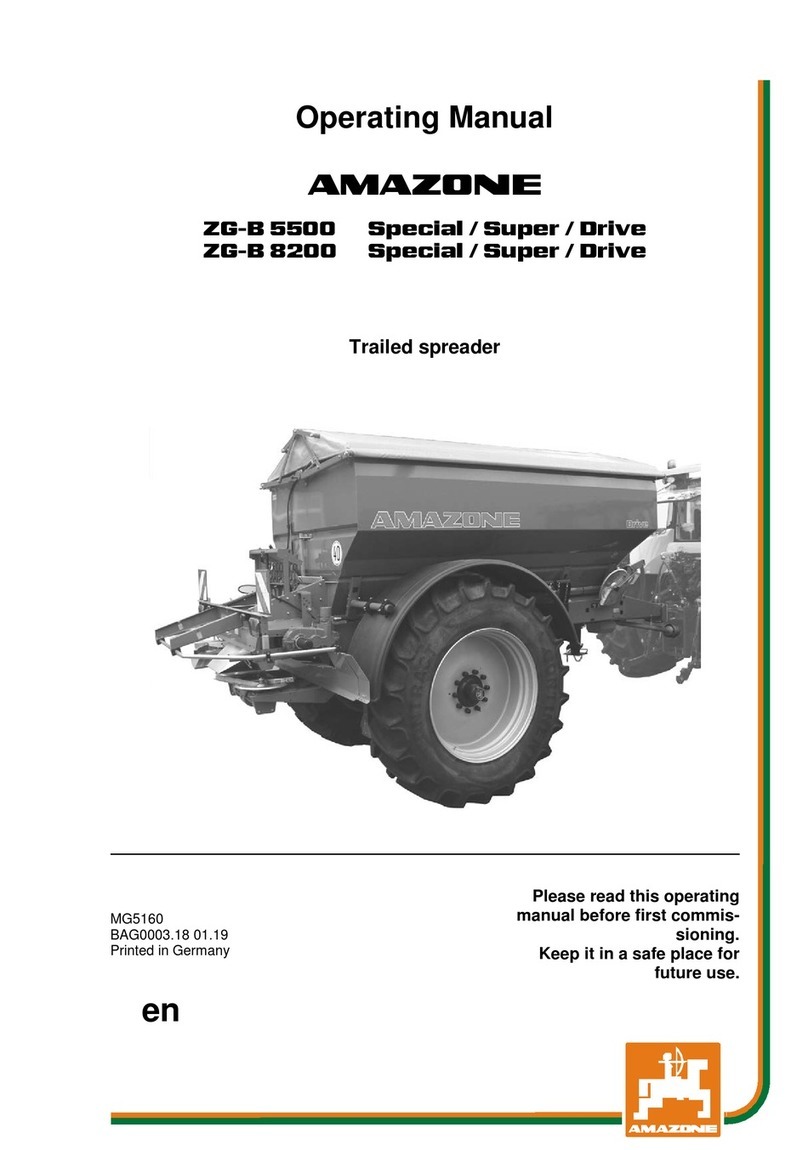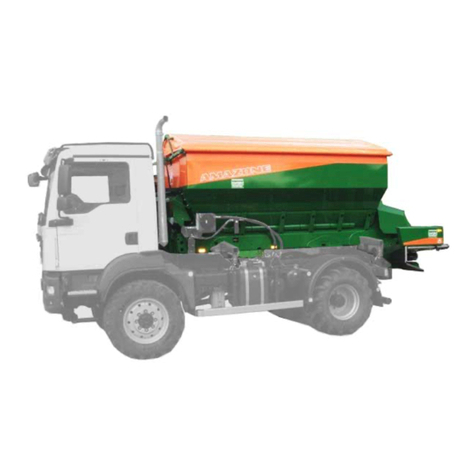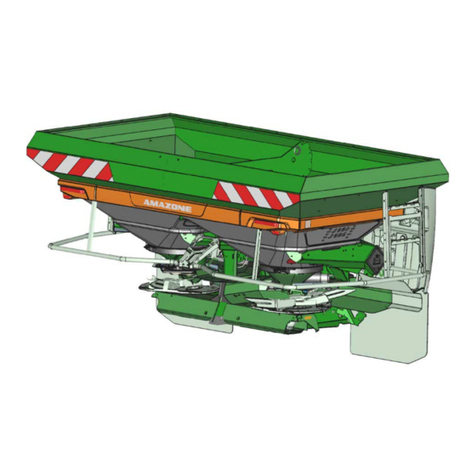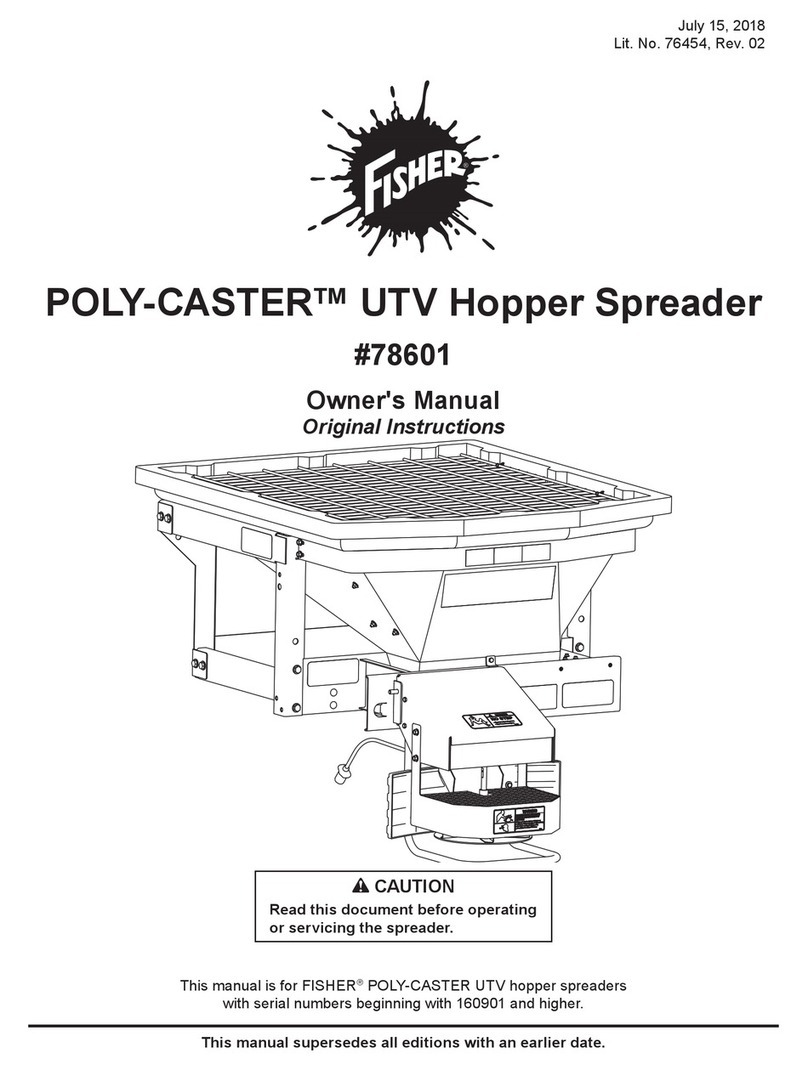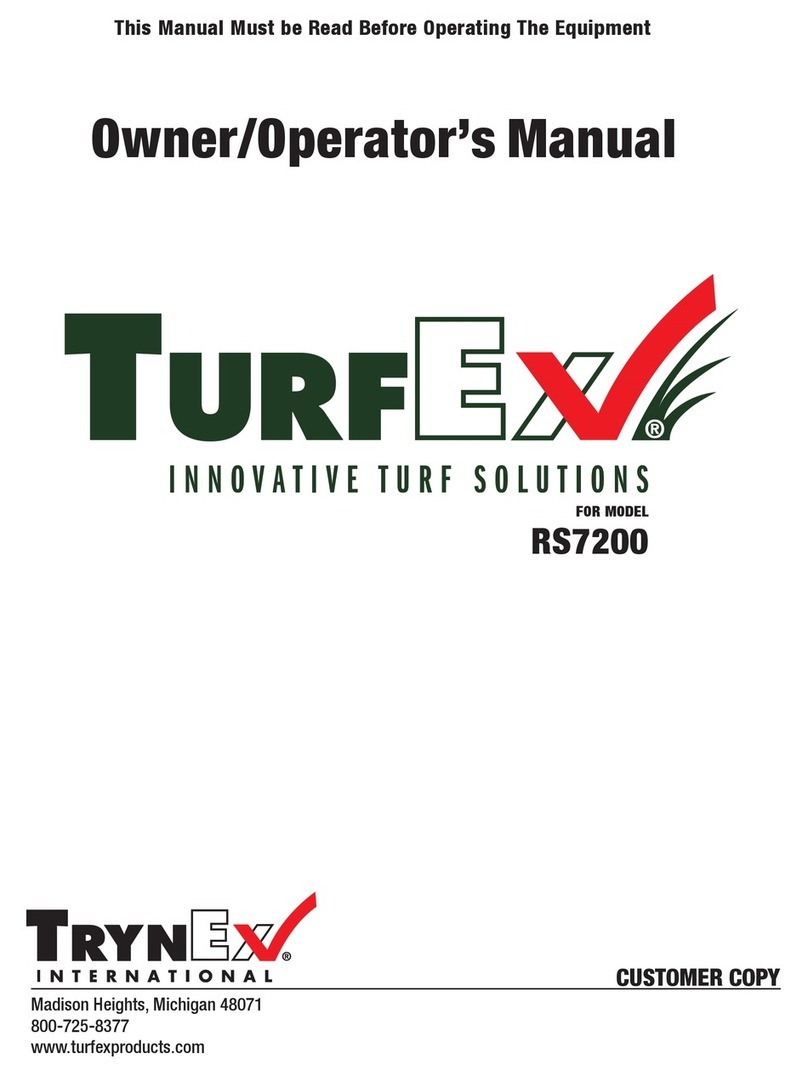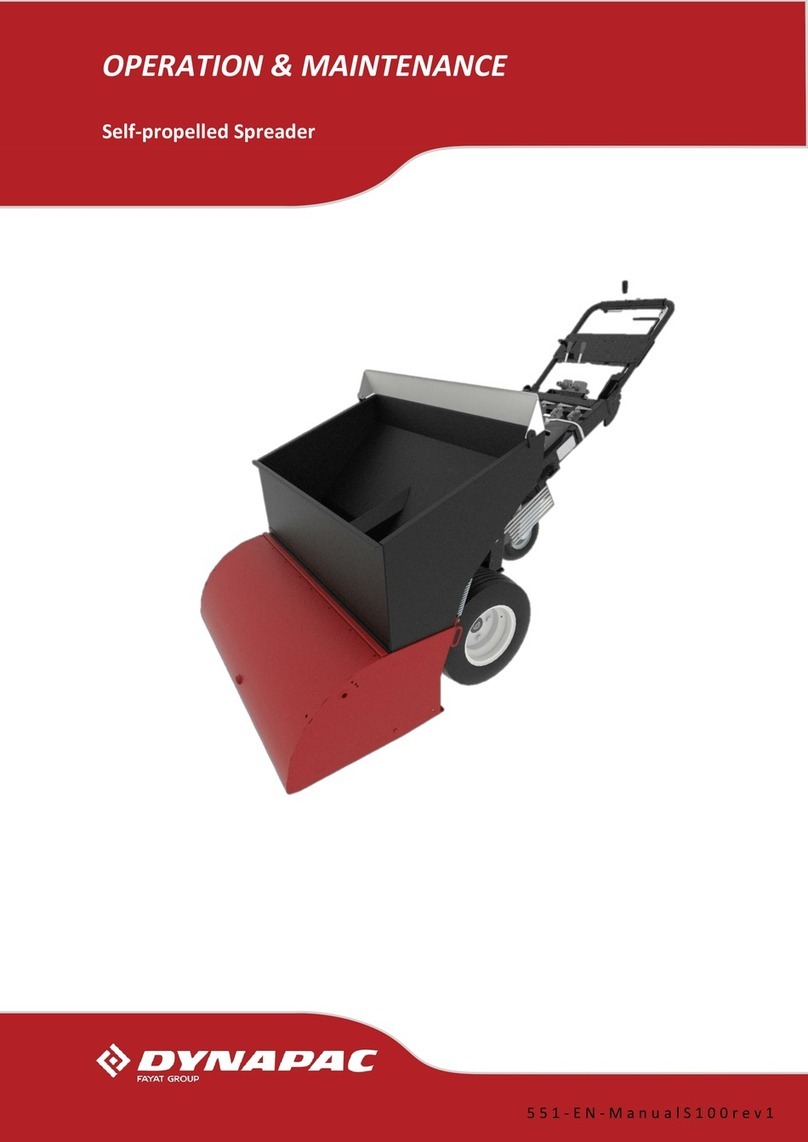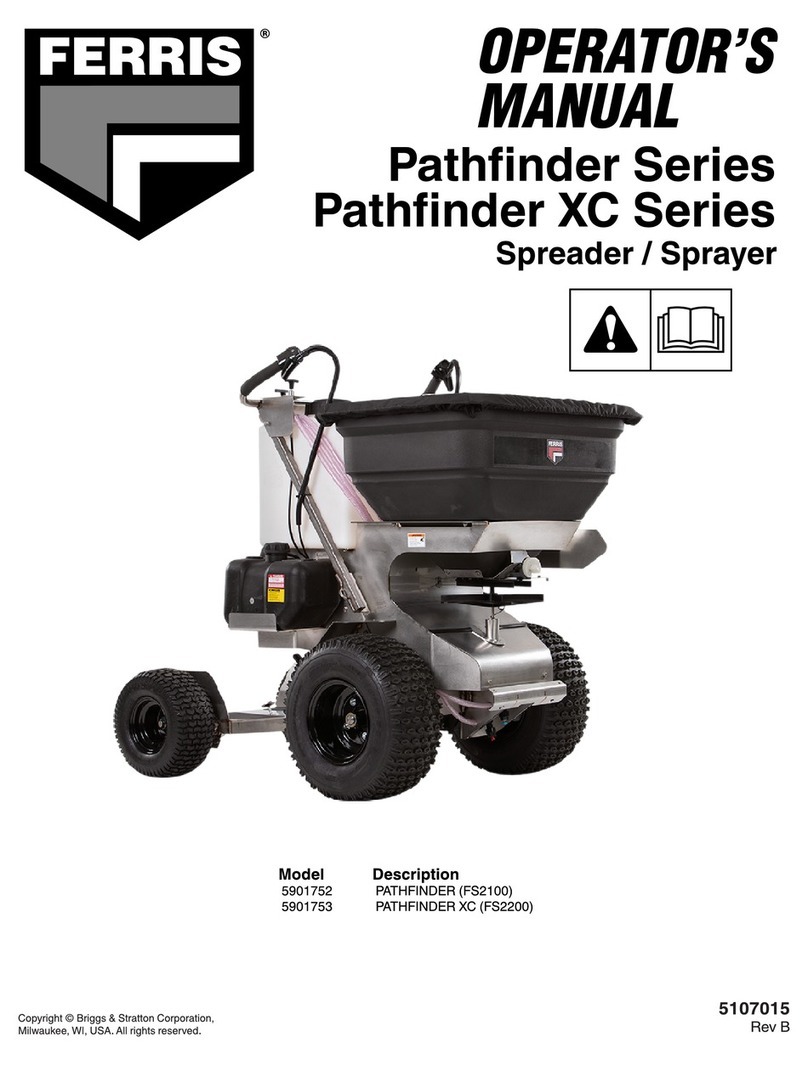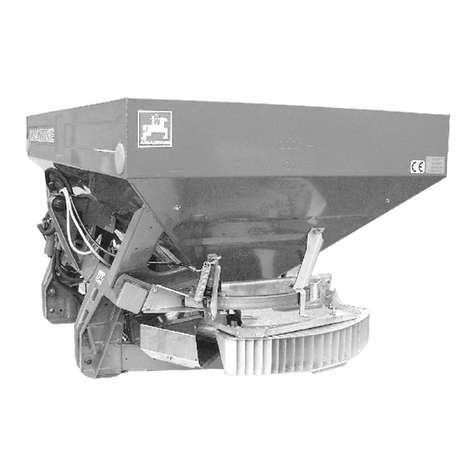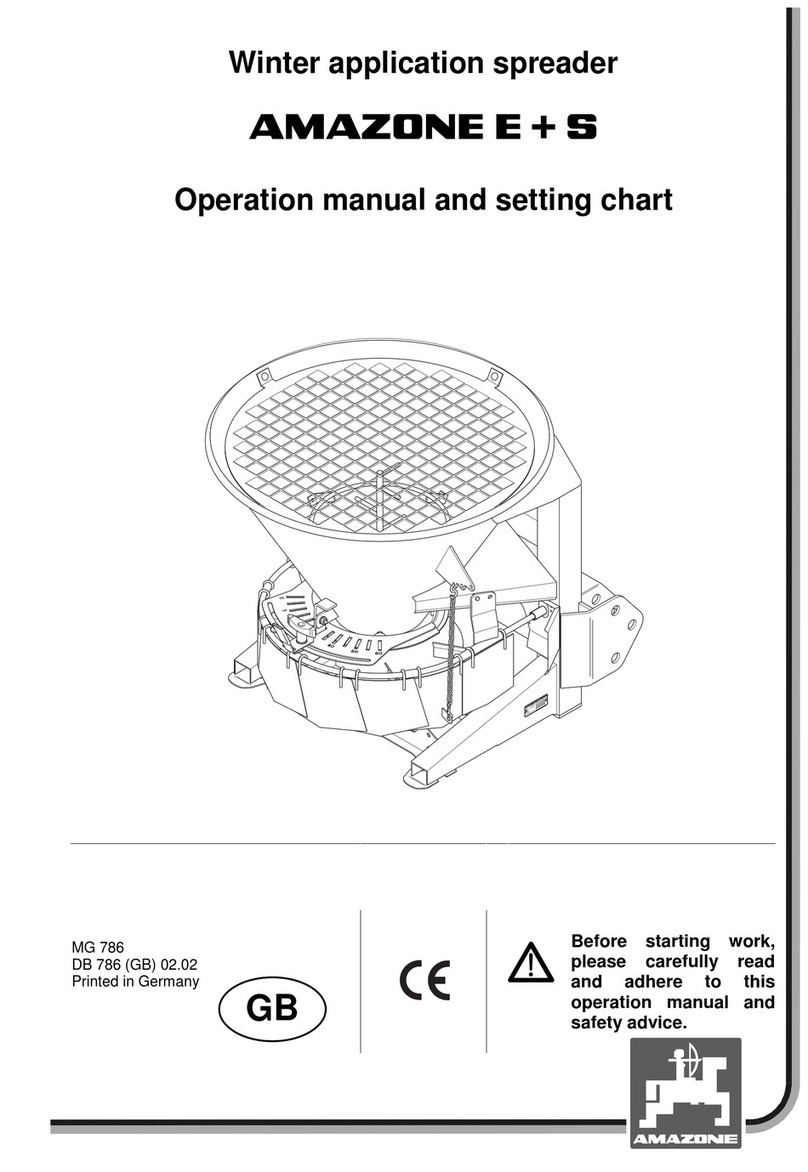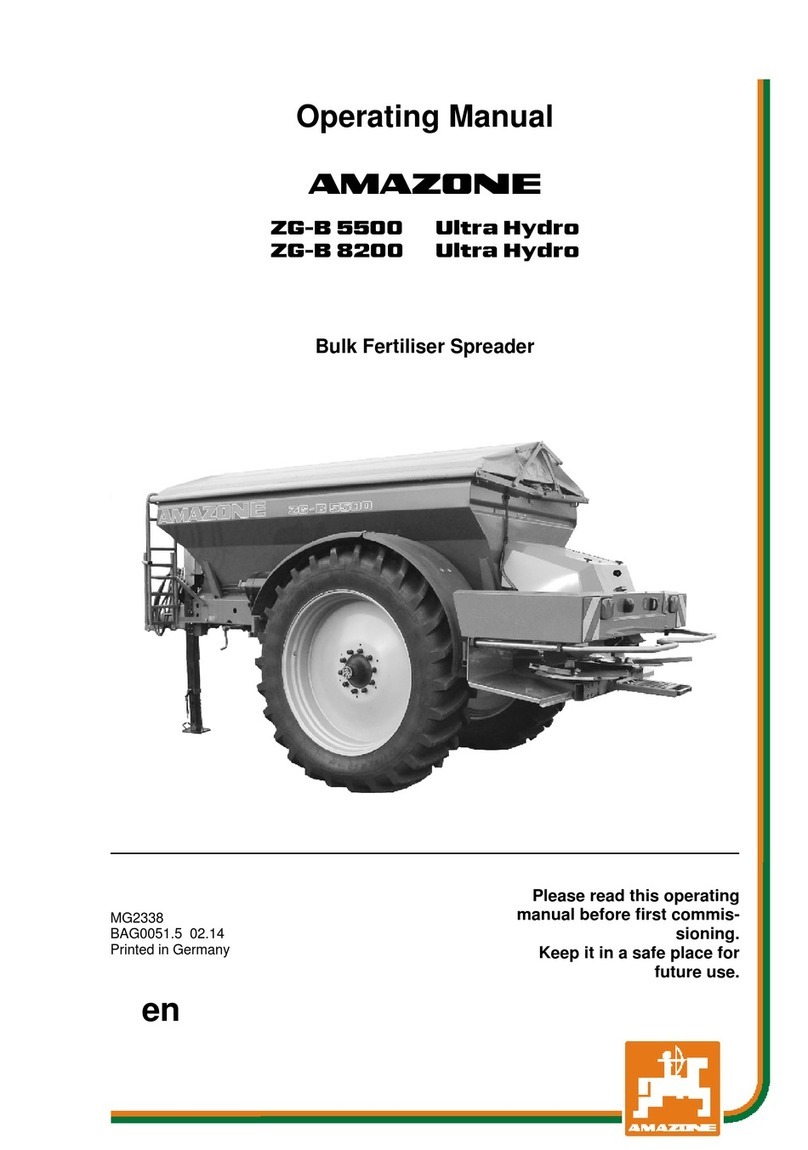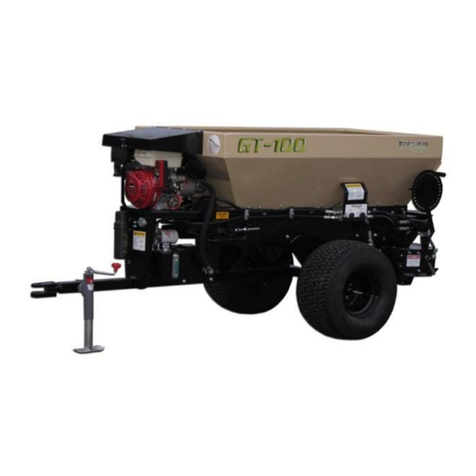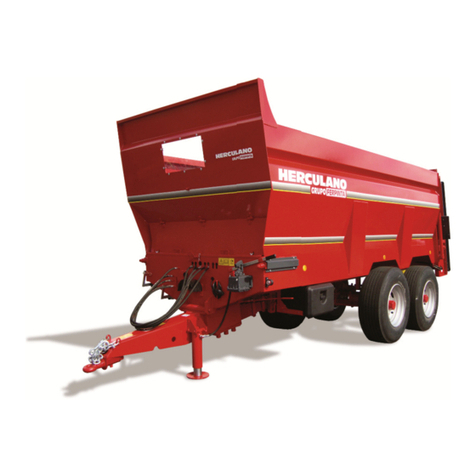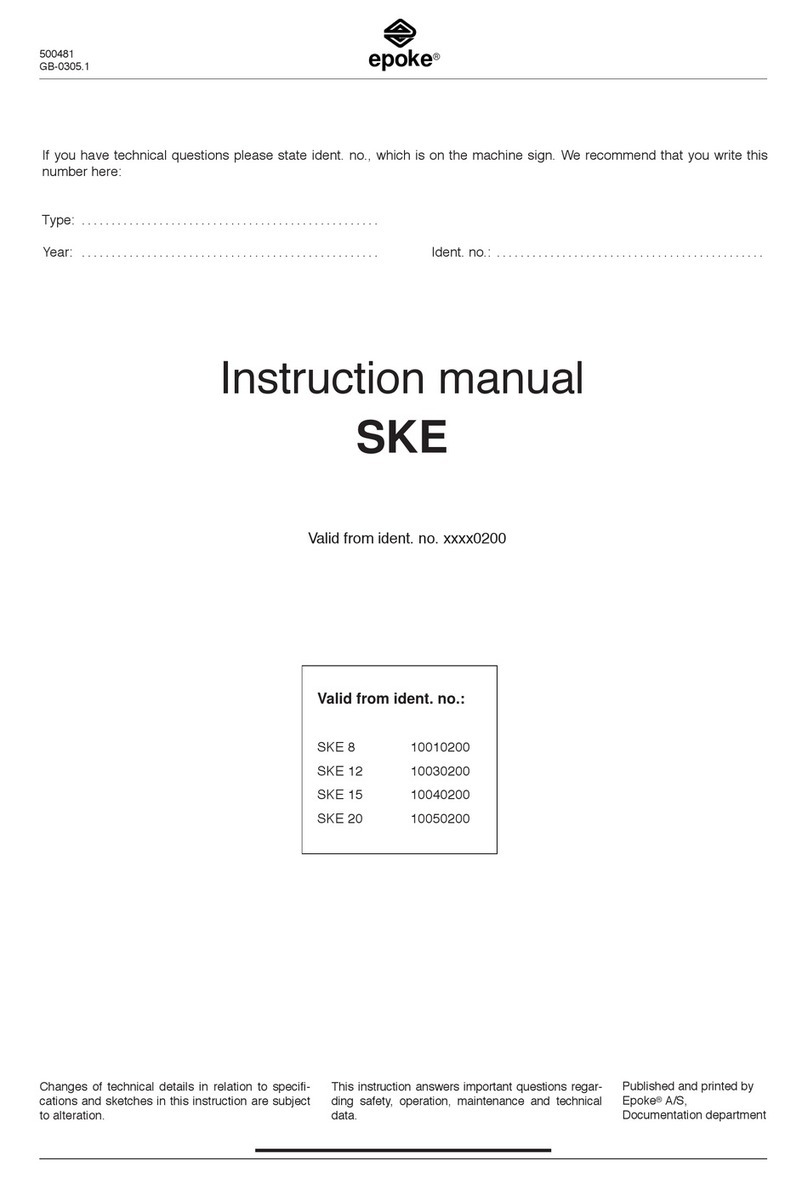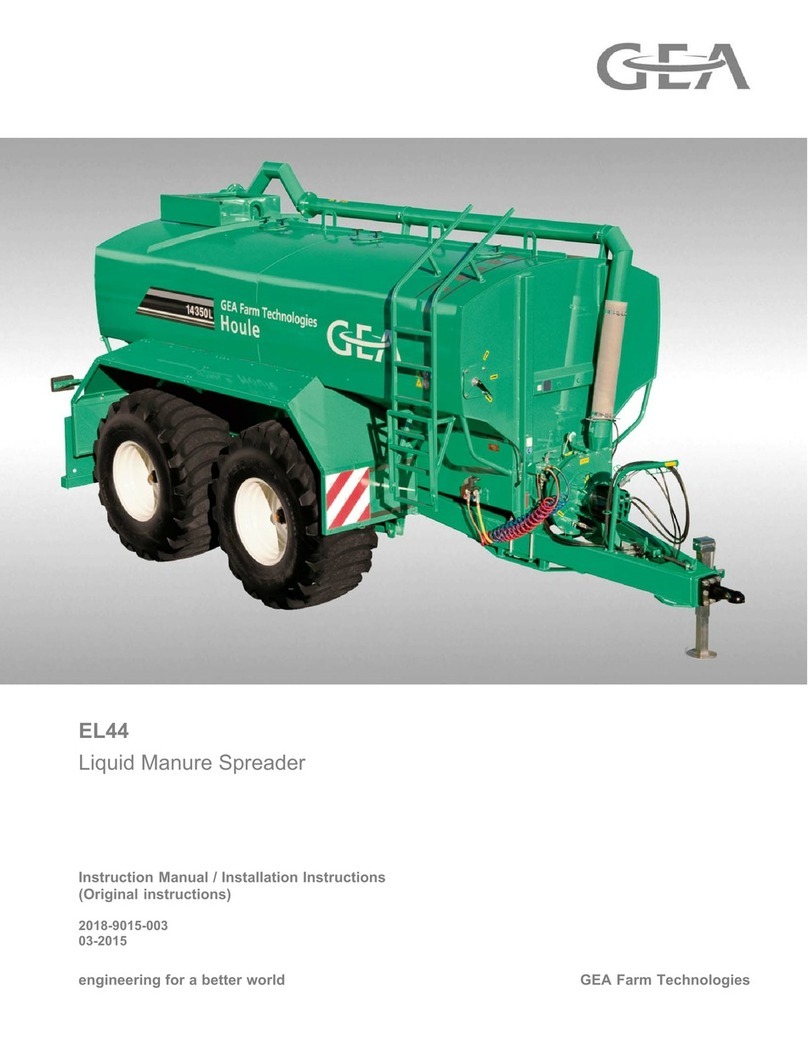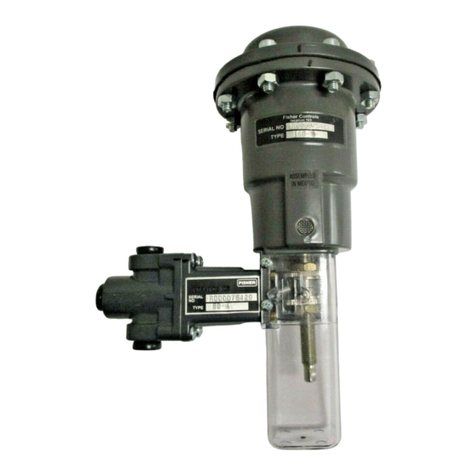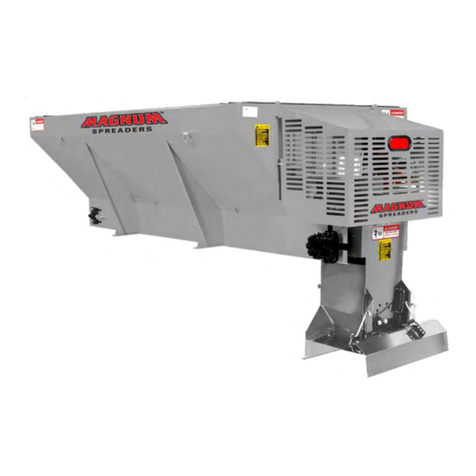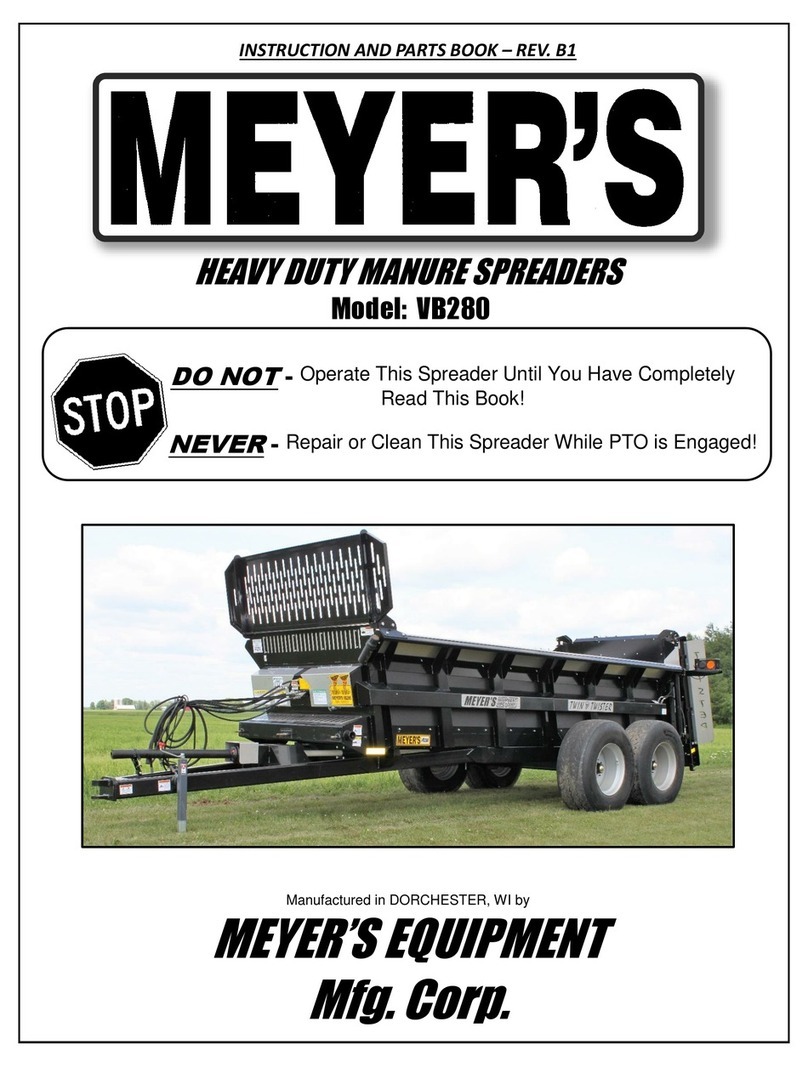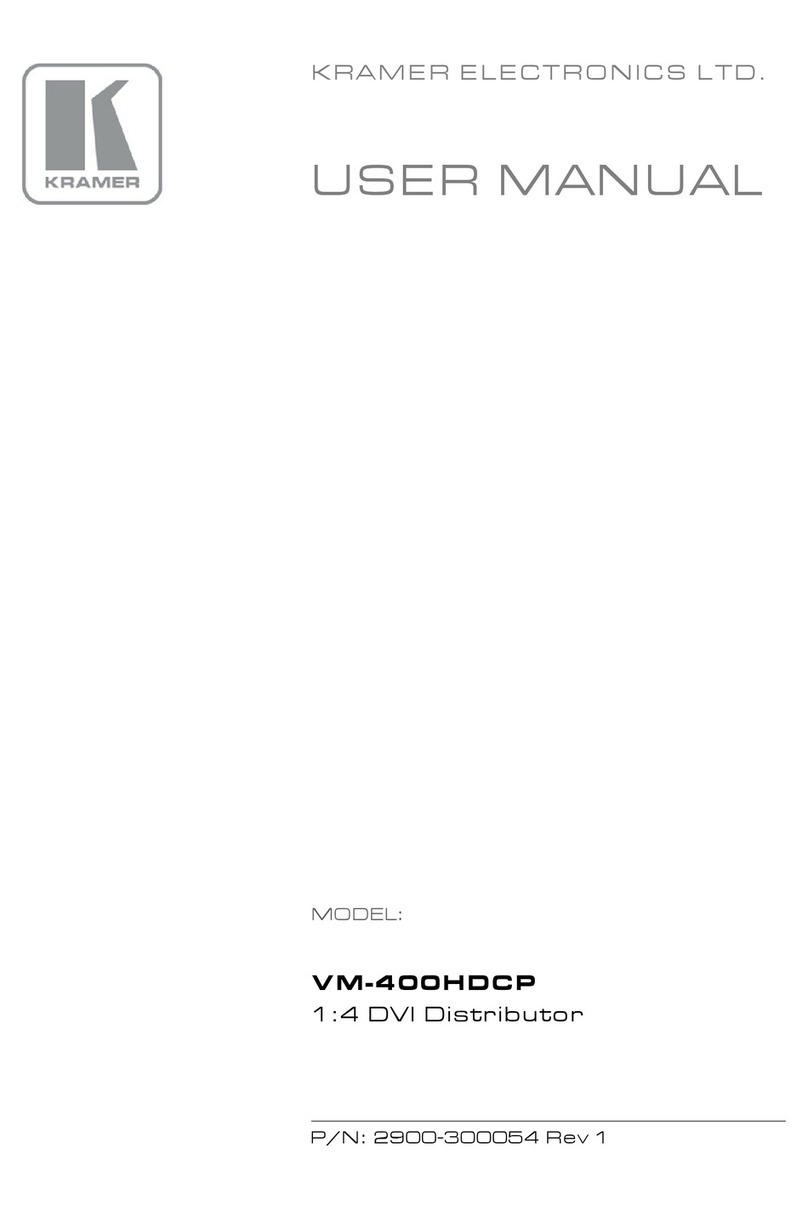
C.10 When lifting a three-Point-mounted machine the front axle of the tractor is relieved by differ-
ent amounts depending on the size of the tractor. Always check, that the necessary front axle
load of the tractor (20% of the tractor’s net weight) is attained!
C.11 When driving round bends note the width of the machine andlor the changing centre of grav-
ity of the implement.
C.12 To avoid sideways Swing of the spreader during Operation set check chain to the tractor’s
lower arms of the three-Point linkage (see tractor accessory).
C. 13 During driving never leave the operator’s seat.
C. 14 Before leaving the tractor lower the machine to the ground. Actuate the parking brake, stop
the engine and remove the ignition key!
C.15 Never stay or allow anyone to stay within the operating area! Warning: Never come near to
unguarded rotating shafts, spinner discs, moving booms, arms etc. - danger of injury!
Cl6 During the clibration test watch out for rotating Parts of the machine.
C.17 Filling of the machine must only be done with the lractor engine stopped, ignition key removed
and shutters closed!
Cl8 Note maximum permissible filling loads!
C.19 DO not place any foreign Parts inside the hopper.
C.20 Mount the implement only with the permissible linkage (lynch Pins, top link etc.).
C.21 Special care should be taken when the implement is coupled to or off the tractor.
C.22 Secure implement and tractor against unintended rolling.
C.23 Put implement into Operation only when all guards are fixed in position.
C.24 When fitting the machine to the three-Point linkage of the tractor bring all control levers into
such a Position that unintended lifting or lowering is impossible!
C.25 When actuating the control levers for the three-Point linkage from outside the tractor cab
never step between tractor and implement!
C.26 When driving on public roads with a lifted machine the lifting control lever should be locked
against unintentional lowering - before leaving the tractor lower the mounted implement onto
the ground and pull out ignition key!
C.27 Allow nowbody to stay between tractor and implement if the tractor is not secured against rol-
ling away by the parking brake and/or by the supplied chocks.
C.28 Connect trailed implements according to traffit law. Check function of the trailer brake sys-
tem. Adhere to manufacturer’s advice.
C.29 Attach implements and trailers only to the hitches provided!
C.30 Never exceed maximum permissible Loadof the coupling drawbar/ hitch!
C.31 When fitting to the three-Point linkage the mounting categories at the tractor and the imple-
ment must be compatible.
C.32 Working implements should only be transported and driven on tractors which are designed to
do this!
C.33 Note maximum permissible axle loads of the tractor (see vehicle documents).
C.34 DO not exceed maximum permissible transport measure.
C.35 Fit and check granspotl gear, traffit lights, warning and guards!
C.36 Sitting of standing on the implement during Operation or during transport is not permissible.
C.37 Make sure that in the transport Position of lhe implement the tractor three-Point linkage has
sufficient lateral immovability. C.38 The release ropes for quick coupler should hang freely
and in the lowered Position must not release the quick coupling by themselves.
C.39 When fitting hitches note sufficient movement at the hitch-Point.
C.40 Affix any ballast weights always as prescribed to the defined fixing Points!
5


